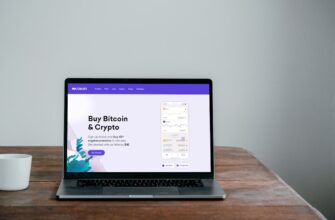- What Are Ethereum ILS (Insurance-Linked Securities)?
- How Ethereum Transforms Traditional ILS Markets
- Key Benefits of Blockchain-Powered ILS
- Current Ethereum ILS Use Cases
- Challenges and Considerations
- The Future of Ethereum ILS
- Getting Started with Ethereum ILS Investments
- Frequently Asked Questions (FAQ)
- What’s the difference between traditional ILS and Ethereum ILS?
- Are Ethereum ILS returns correlated with crypto markets?
- How are payouts verified in Ethereum ILS?
- What minimum investment is required?
- Is Ethereum ILS legal in the US?
What Are Ethereum ILS (Insurance-Linked Securities)?
Ethereum ILS represent a groundbreaking fusion of decentralized blockchain technology and traditional insurance risk transfer. Insurance-Linked Securities (ILS) are financial instruments that allow insurers to transfer catastrophic risks (like hurricanes or earthquakes) to capital market investors. By leveraging Ethereum’s smart contract capabilities, these instruments become programmable, transparent, and accessible like never before.
How Ethereum Transforms Traditional ILS Markets
Traditional ILS structures like catastrophe bonds involve complex intermediaries and opaque processes. Ethereum introduces transformative advantages:
- Automated Payouts: Smart contracts automatically trigger payments when predefined conditions (e.g., hurricane magnitude) are met via oracle-verified data.
- Transparent Risk Modeling: All contract terms and risk parameters are immutably recorded on-chain, reducing disputes.
- Fractional Ownership: Tokenization enables micro-investments, democratizing access to ILS markets.
- Reduced Costs: Eliminates 20-30% in intermediary fees by automating administration and settlement.
Key Benefits of Blockchain-Powered ILS
- Enhanced Liquidity: Secondary markets for tokenized ILS enable 24/7 trading on decentralized exchanges.
- Real-Time Risk Assessment: IoT sensors can feed live data to smart contracts for dynamic risk repricing.
- Global Investor Access: Borderless participation expands capital pools for insurers.
- Regulatory Compliance: Programmable KYC/AML protocols ensure investor verification within transactions.
Current Ethereum ILS Use Cases
Innovative projects are already demonstrating practical applications:
- Parametric Crop Insurance: Farmers in developing countries receive automatic payouts based on satellite-verified drought data.
- Catastrophe Bonds 2.0: Hurricane-exposed Caribbean nations issue ETH-denominated bonds with instant settlement.
- DeFi Insurance Pools: Platforms like Nexus Mutual use Ethereum ILS principles to cover smart contract failures.
Challenges and Considerations
Despite the potential, key hurdles remain:
- Regulatory uncertainty regarding tokenized securities across jurisdictions
- Oracle reliability for accurate real-world event verification
- Smart contract vulnerabilities requiring rigorous auditing
- Scalability limitations during peak disaster events
The Future of Ethereum ILS
As Ethereum transitions to proof-of-stake and implements sharding, expect accelerated adoption. Industry analysts predict:
- Hybrid ILS products combining traditional and blockchain elements
- AI integration for predictive risk modeling on-chain
- Cross-chain interoperability with other ecosystems like Polkadot
- Growth to $15B in blockchain ILS premiums by 2028 (per PwC projections)
Getting Started with Ethereum ILS Investments
For investors exploring this emerging asset class:
- Research platforms like Etherisc or Arbol
- Use regulated exchanges with proper ILS token listings
- Allocate only risk capital (recommended: <5% portfolio)
- Verify smart contract audits through firms like CertiK
Frequently Asked Questions (FAQ)
What’s the difference between traditional ILS and Ethereum ILS?
Traditional ILS rely on manual processes and centralized clearinghouses, while Ethereum ILS use self-executing smart contracts on a decentralized blockchain for automation and transparency.
Are Ethereum ILS returns correlated with crypto markets?
Typically no. Returns are primarily tied to insurance risk performance (e.g., absence of disasters), making them an attractive portfolio diversifier against crypto volatility.
How are payouts verified in Ethereum ILS?
Decentralized oracles (like Chainlink) feed real-world data to smart contracts. For hurricanes, this might include NOAA wind-speed measurements; for flights, FAA delay databases.
What minimum investment is required?
Tokenization enables fractional ownership – some platforms allow entry with as little as $100, versus traditional ILS’ $500k+ minimums.
Is Ethereum ILS legal in the US?
Regulatory clarity is evolving. Currently, compliant offerings are structured as regulated securities (SEC) or through licensed insurers (state departments). Always verify platform compliance.








